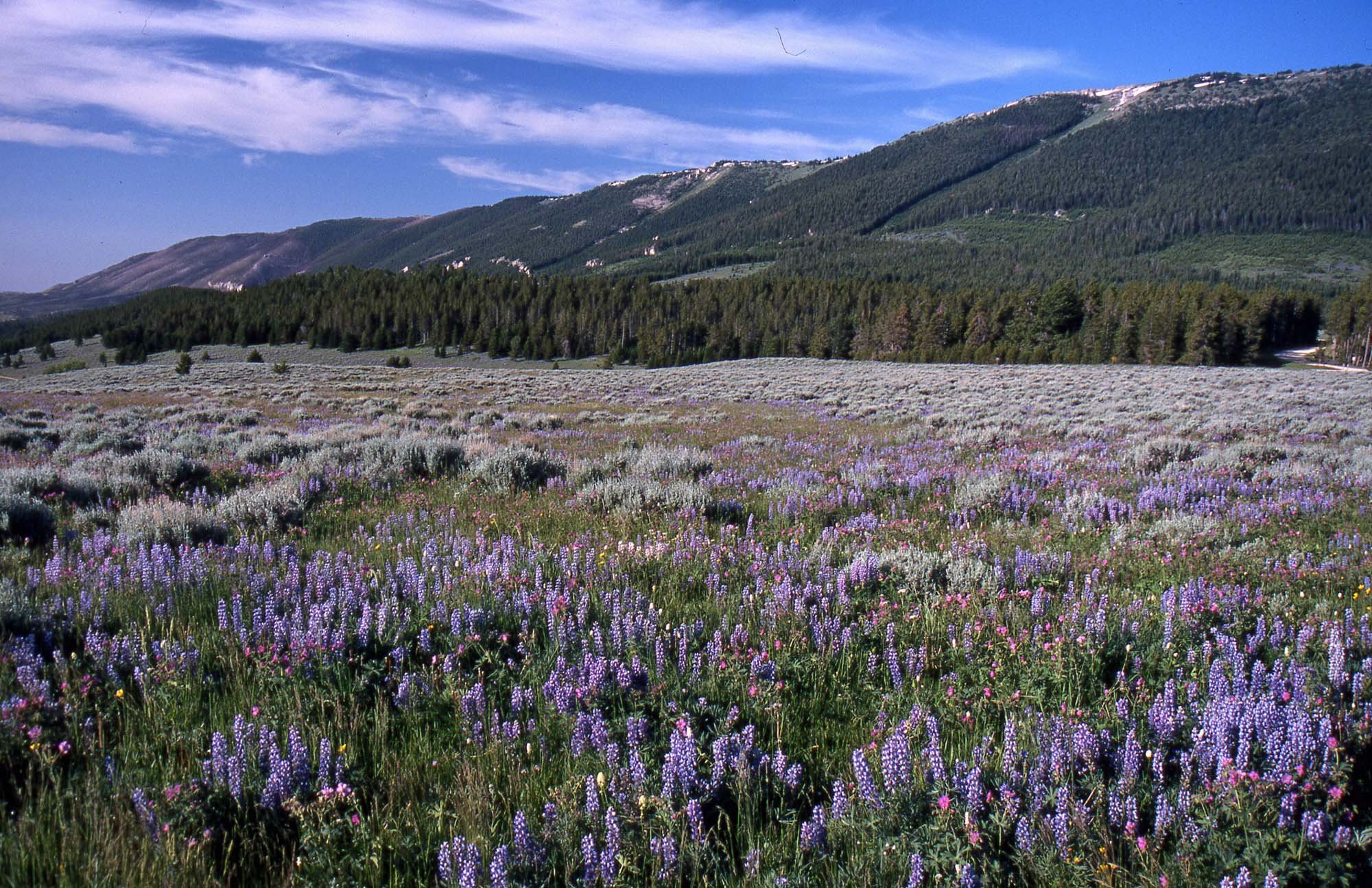
What is so special about the Pryors?
Unlike any other landscape in Montana
Rick and Susie Graetz Photo
The Pryor Mountains are unlike any other landscape in Montana - and beyond. They are utterly different from the Beartooth Mountains only 40 miles to the west. The Pryors are geologically, ecologically, meteorologically, and culturally unique - an island of mountains rising from the prairie, formed by erosion of uplifted sedimentary rock, instead of glacier carved igneous rock. The numerous, rugged and spectacular limestone canyons provide viewpoints from which to share the solitude with the intermittent, quiet and haunting call of the hermit thrush.
The Pryor Mountains, just 40 miles south of Montana's largest city, and just north of the Wyoming border, are comprised of two uplifted mountain blocks – East Pryor Mountain and Big Pryor Mountain. Deeply cut by numerous rugged canyons, the south and west slopes of each block rise gradually from the prairie to sub-alpine prairie plateaus peaking at about 8,800 feet elevation. The east and north faces of each block drop precipitously by several thousand feet. Spectacular Crooked Creek Canyon drains from north to south between the two blocks.
The Pryors are a rich resource for scientists, teachers, students - and fascinated lay naturalists. They offer opportunities for discovery in many areas of biology and geology. As an island rising nearly 5,000 ft above the surrounding plains, with limestone based soils, and their own climate in the rain shadow of the Beartooths, the Pryors have a broad diversity of unique ecosystems. The pages linked below provide introductions to several interesting topics in the Natural and Cultural History of the Pryors.
View southwest from Red Pryor Mountain. (d. walton photos)
Within a distance of ten miles as the raven flies, you can travel from Montana's most arid red desert in the double rain shadow of both the Beartooths and the Pryors (with less than 5 inches of precipitation per year), to high Douglas fir forests and subalpine meadows. The rich variety of habitats in between include sagebrush, riparian ash, mountain mahogany, limber pine, juniper (up to 500 years old) and much more. Nearly 1,000 species of plants have been identified on this island in the prairie. That is 40% of the plant species that grow in all of Montana. Among these are many rare and sensitive species several of which, including Shoshone Carrot (Shoshonea pulvinata), grow almost nowhere else. And Pryor Mountain Bladderpod (Lesquerella lesicii), first discovered in 1991, is found only in the Pryors.
View from Vermillion Valley north to Big Pryor Mountain.
The Pryors are considered a botanical "hot spot" and thus a unique and valuable scientific and educational treasure. Spectacular and colorful displays of spring and summer wildflowers make the area a favorite for amateur wildflower watchers and photographers.
The diverse habitats in the Pryors are home to a similar diversity of birds, butterflies and other wildlife ranging from bighorn sheep, mule deer, black bear, mountain lion, and ten species of bats, to golden eagles, peregrine falcons, blue-gray gnatcatchers and calliope hummingbirds. Audubon groups and other birders make frequent trips for the opportunity to observe the more than 200 resident species. Within the generally arid Pryors several small and isolated streams contain genetically pure strains of Yellowstone cutthroat trout.
Pictographs, tepee rings, ancient vision quest sites,and numerous shelter caves in the limestone canyons provide archaeological evidence of human use for at least 10,000 years. This is more than academic archeology for Native American tribes. The Apsaalooke (Crow) believe the sacred Arrow Shot Into Rock Mountains, also called the Pryors, are home to the Little People. The mountains are where First Maker travels as he watches his creation. "If you need to contact me you will find me along the backbone of the earth where I travel as I watch my possession." Modern Apsaalooke still go to the Arrow Shot Into Rock Mountains on fasting quests.
The homestead era from the 1880s through the 1930s provides another chapter in the human history of the Pryors. Several areas in and around the Pryors had active communities of settlers.
The Pryors are a valuable community resource that we all enjoy in many ways: hiking, bird-, butterfly-, and wildflower-watching horseback riding, hunting, scenic drives, geologic information and self-guided tours. Big, open and beautiful, the Pryors offer a quiet escape for all sorts of Montanans. But they face a problem: current management strongly emphasizes motorized recreation that threatens to scar the fragile, arid land and shatter the opportunity to escape from the rush of the city.
The Pryors Coalition works to assure that the ecological, geological, and cultural treasure of the Pryors is preserved, and that future visitors will be able to listen to the wind whispering through the canyons, smell the abundant flowers – and enjoy the sweeping vistas of the Beartooth and Bighorn Mountains in peaceful solitude.
Please join us to protect this land that belongs to all of us.
Congressionally Designated Wilderness, and/or National Monument Designation in the Pryors ??
Currently the public land in the Pryors is managed by the Forest Service (Custer Gallatin National Forest, CGNF), the Bureau of Land Management (BLM), and the National Park Service (Bighorn Canyon National Recreation Area, BCNRA) according to typical USFS, BLM, and NPS management policies. Many of us think this small island in the Montana prairie is so important culturally and ecologically that this landscape should be more carefully protected for the future with Congressionally designated Wilderness Areas, and/or National Monument designation.
Tell us what you think - and why. Click here.